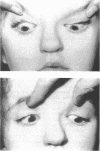Abstract
A characteristic pattern of dissociated eye movements was observed in a large proportion of our patients with a variety of craniosynostosis syndromes. These anomalies simulate overaction of the inferior oblique and underaction of the superior oblique muscles which, however, cannot fully explain the abnormalities. In a number of cases, excyclorotation of the muscle cone was observed, with the upper pole of the eye tilted away from the midline. It is postulated that such excyclorotation of the eyes will lead to dissociated eye movements which can be explained on physiological grounds according to Hering's law. This paper presents a review of our patients and evidence to support this hypothesis.
Full text
PDF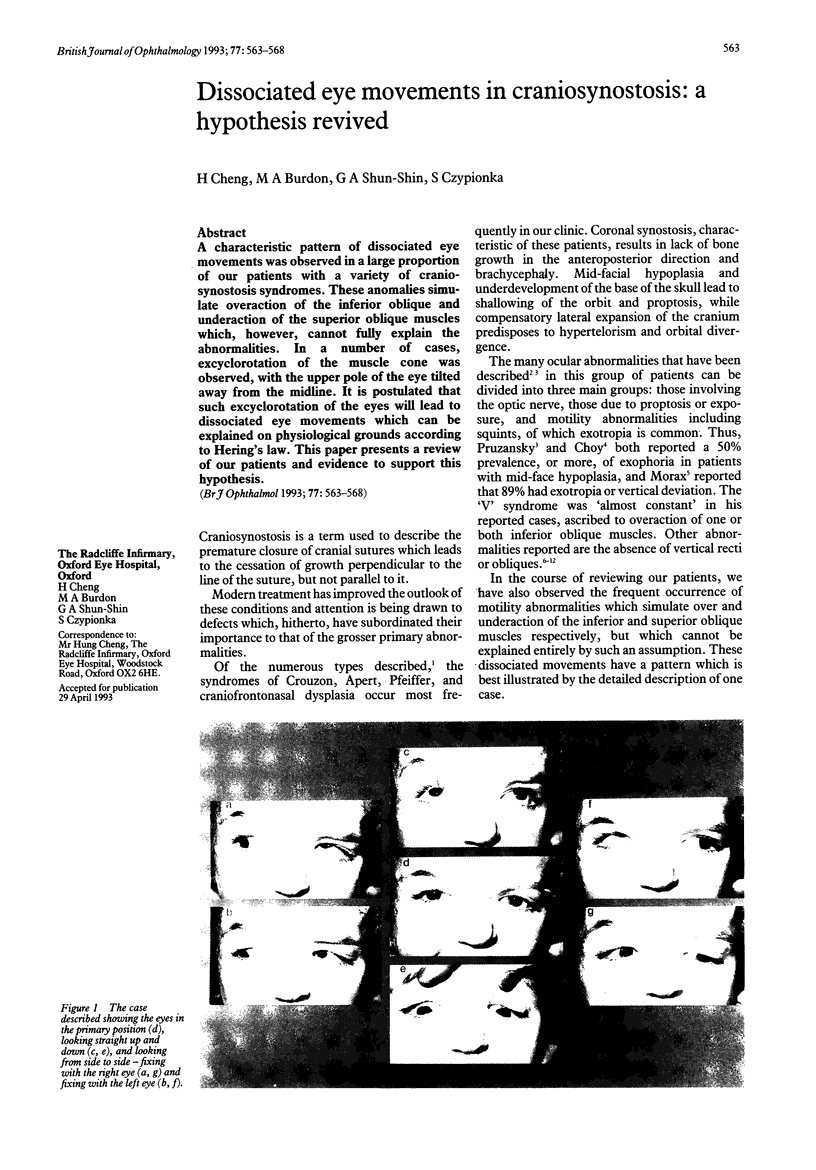
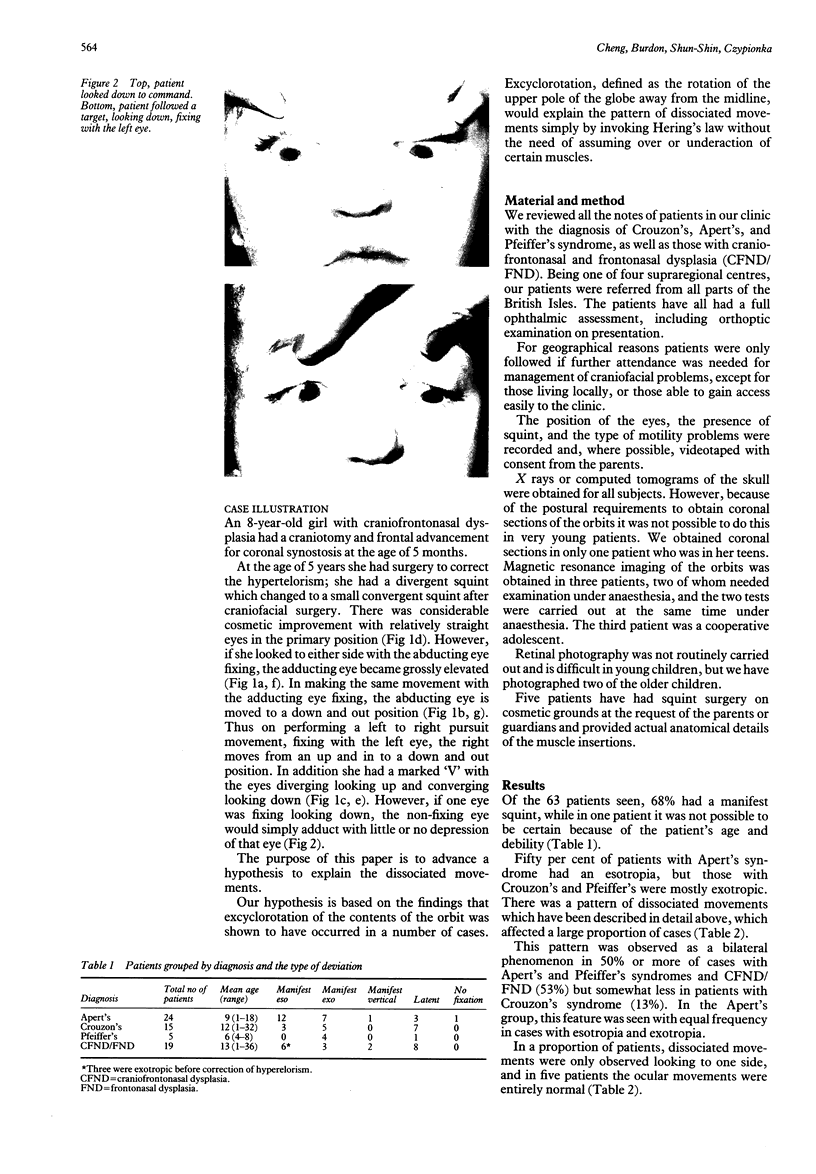
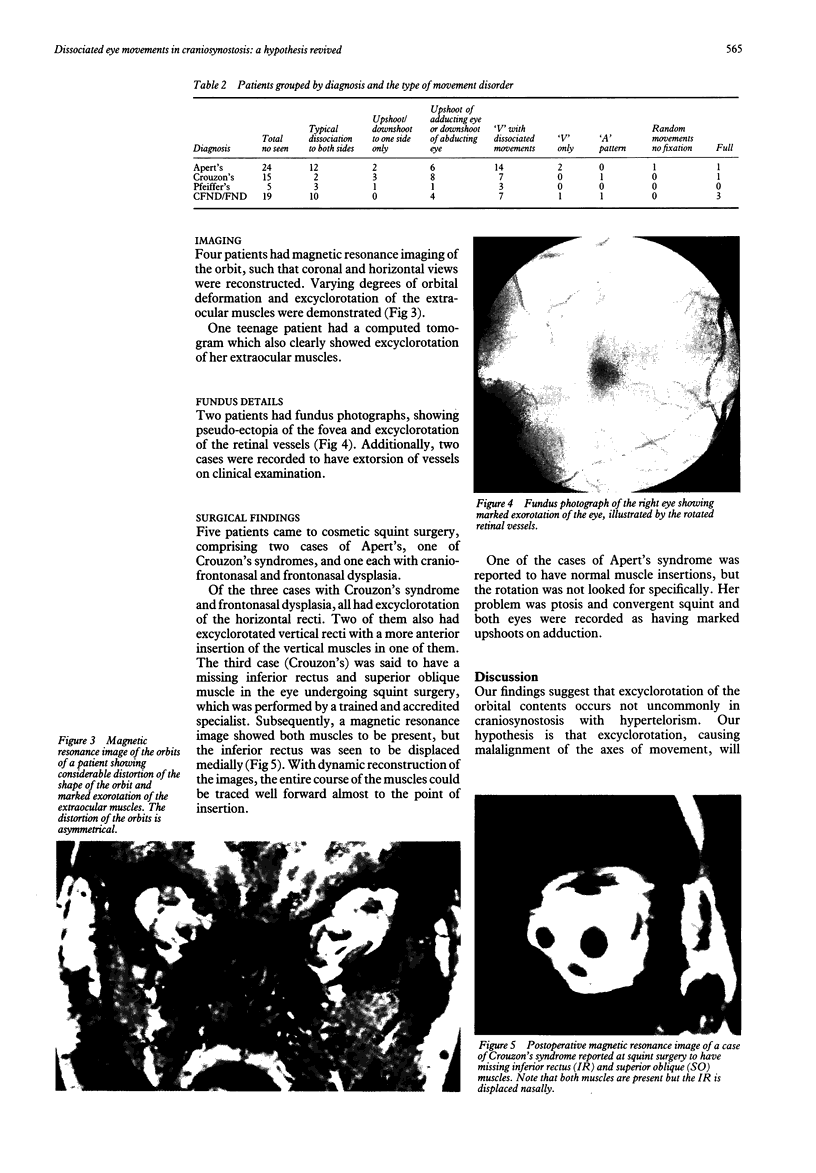
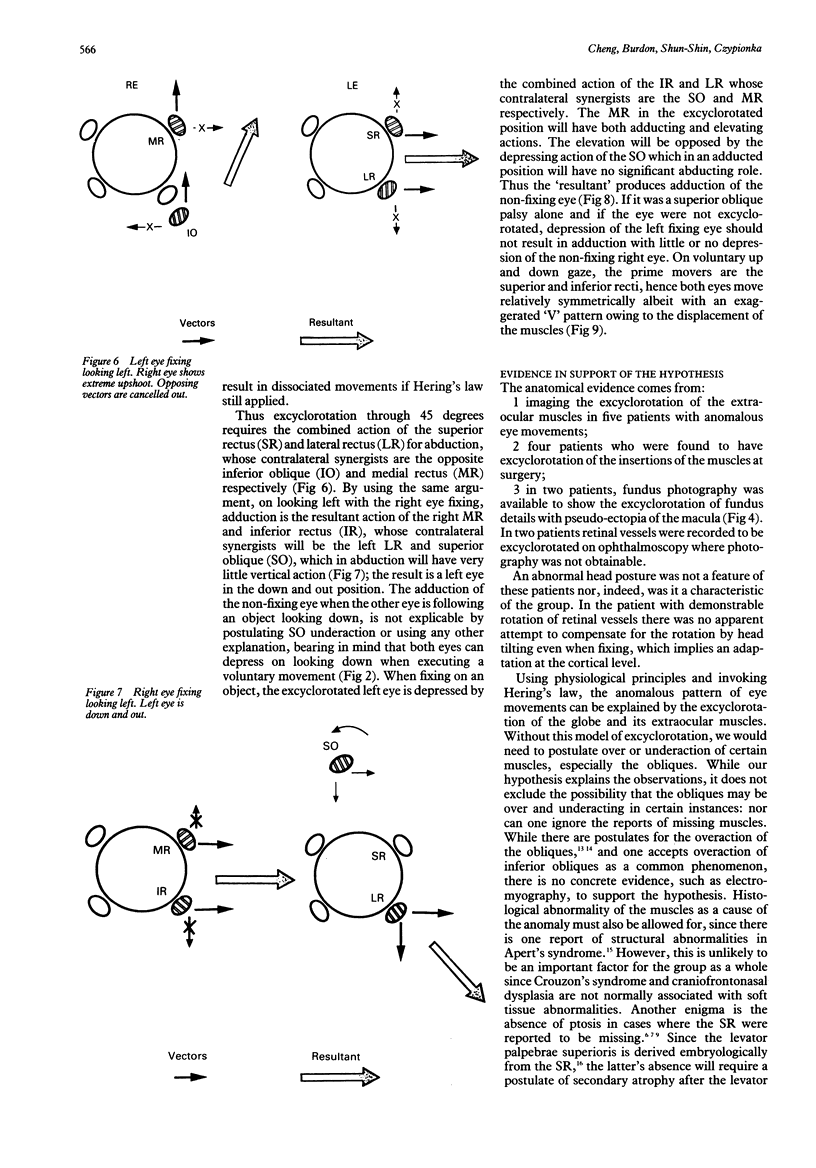
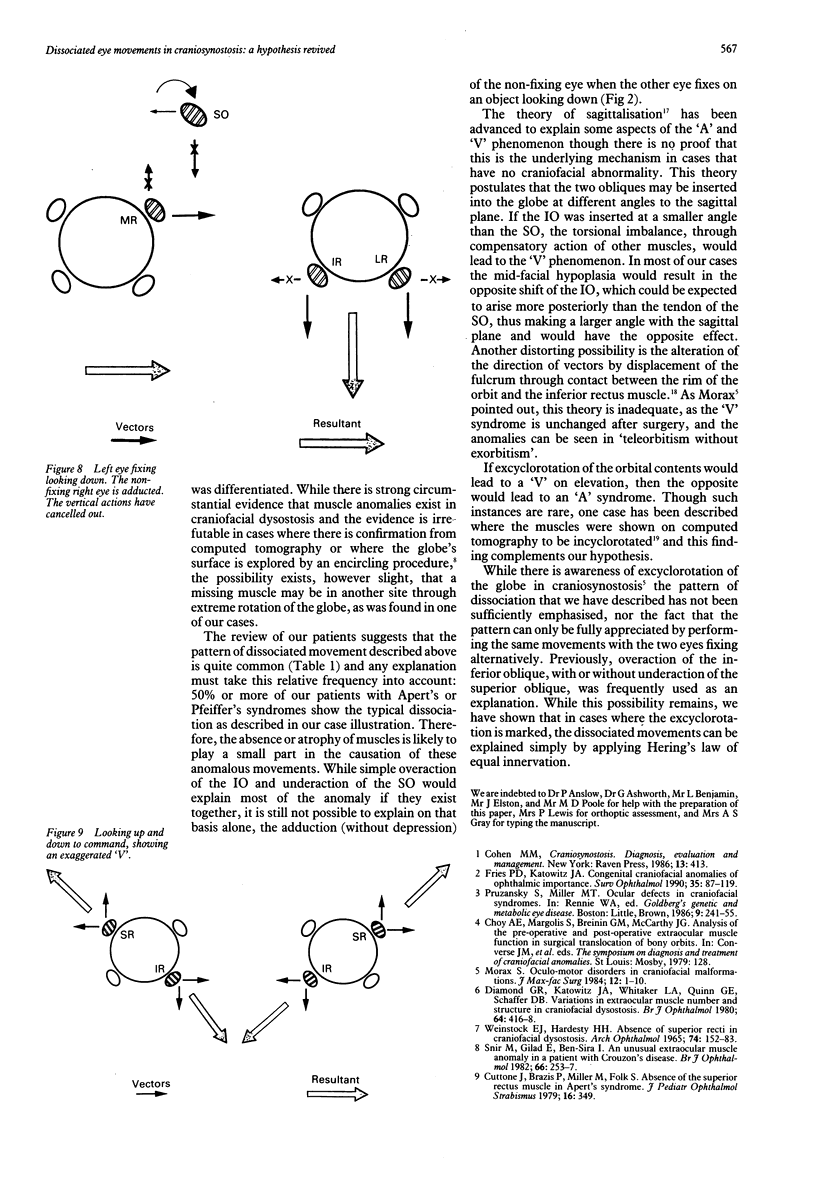
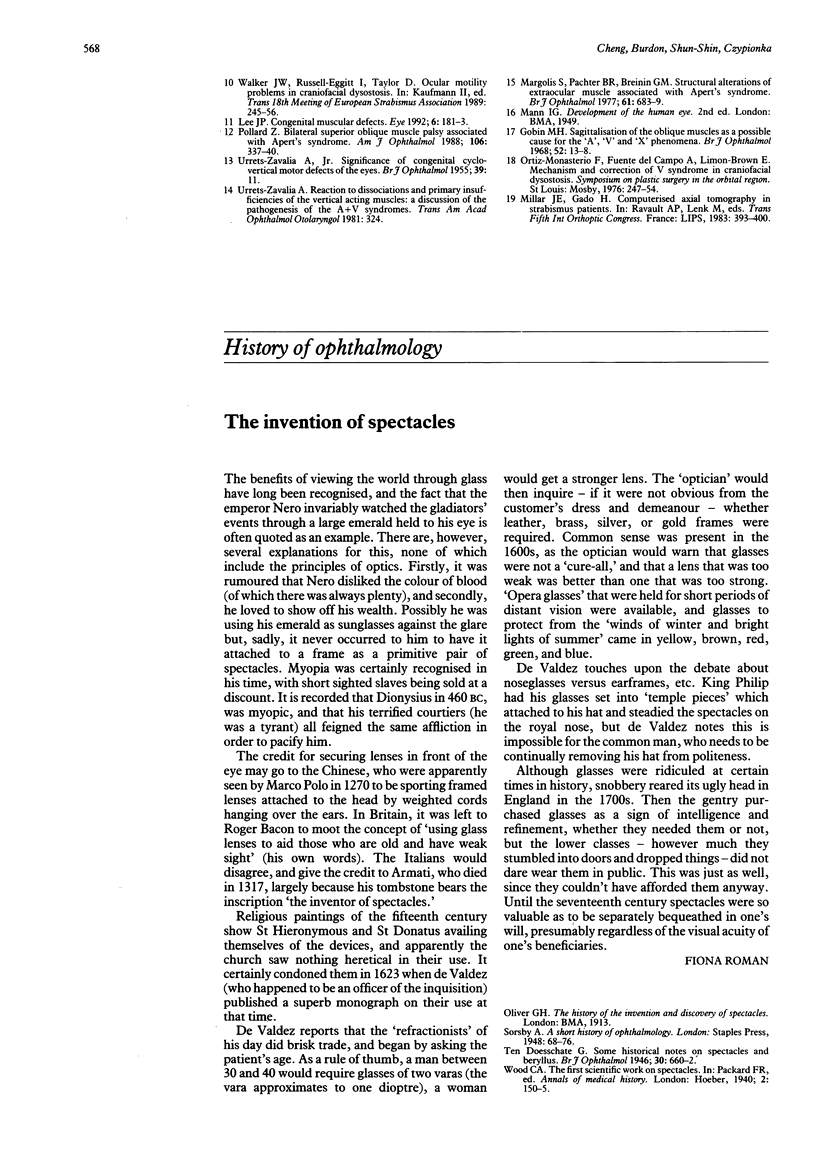
Images in this article
Selected References
These references are in PubMed. This may not be the complete list of references from this article.
- Cuttone J. M., Brazis P. T., Miller M. T., Folk E. R. Absence of the superior rectus muscle in Apert's syndrome. J Pediatr Ophthalmol Strabismus. 1979 Nov-Dec;16(6):349–354. doi: 10.3928/0191-3913-19791101-04. [DOI] [PubMed] [Google Scholar]
- Diamond G. R., Katowitz J. A., Whitaker L. A., Quinn G. E., Schaffer D. B. Variations in extraocular muscle number and structure in craniofacial dysostosis. Am J Ophthalmol. 1980 Sep;90(3):416–418. doi: 10.1016/s0002-9394(14)74927-x. [DOI] [PubMed] [Google Scholar]
- Fries P. D., Katowitz J. A. Congenital craniofacial anomalies of ophthalmic importance. Surv Ophthalmol. 1990 Sep-Oct;35(2):87–119. doi: 10.1016/0039-6257(90)90067-6. [DOI] [PubMed] [Google Scholar]
- Gobin M. H. Sagittalization of the oblique muscles as a possible cause for the "A", "V", and "X" phenomena. Br J Ophthalmol. 1968 Jan;52(1):13–18. doi: 10.1136/bjo.52.1.13. [DOI] [PMC free article] [PubMed] [Google Scholar]
- Lee J. P. Congenital extraocular muscular defects. Eye (Lond) 1992;6(Pt 2):181–183. doi: 10.1038/eye.1992.36. [DOI] [PubMed] [Google Scholar]
- Margolis S., Pachter B. R., Breinin G. M. Structural alterations of extraocular muscle associated with Apert's syndrome. Br J Ophthalmol. 1977 Nov;61(11):683–689. doi: 10.1136/bjo.61.11.683. [DOI] [PMC free article] [PubMed] [Google Scholar]
- Morax S. Oculo-motor disorders in craniofacial malformations. J Maxillofac Surg. 1984 Feb;12(1):1–10. doi: 10.1016/s0301-0503(84)80201-5. [DOI] [PubMed] [Google Scholar]
- Pollard Z. F. Bilateral superior oblique muscle palsy associated with Apert's syndrome. Am J Ophthalmol. 1988 Sep 15;106(3):337–340. doi: 10.1016/0002-9394(88)90371-6. [DOI] [PubMed] [Google Scholar]
- Snir M., Gilad E., Ben-Sira I. An unusual extraocular muscle anomaly in a patient with Crouzon's disease. Br J Ophthalmol. 1982 Apr;66(4):253–257. doi: 10.1136/bjo.66.4.253. [DOI] [PMC free article] [PubMed] [Google Scholar]
- WEINSTOCK F. J., HARDESTY H. H. ABSENCE OF SUPERIOR RECTI IN CRANIOFACIAL DYSOSTOSIS. Arch Ophthalmol. 1965 Aug;74:152–153. doi: 10.1001/archopht.1965.00970040154003. [DOI] [PubMed] [Google Scholar]




